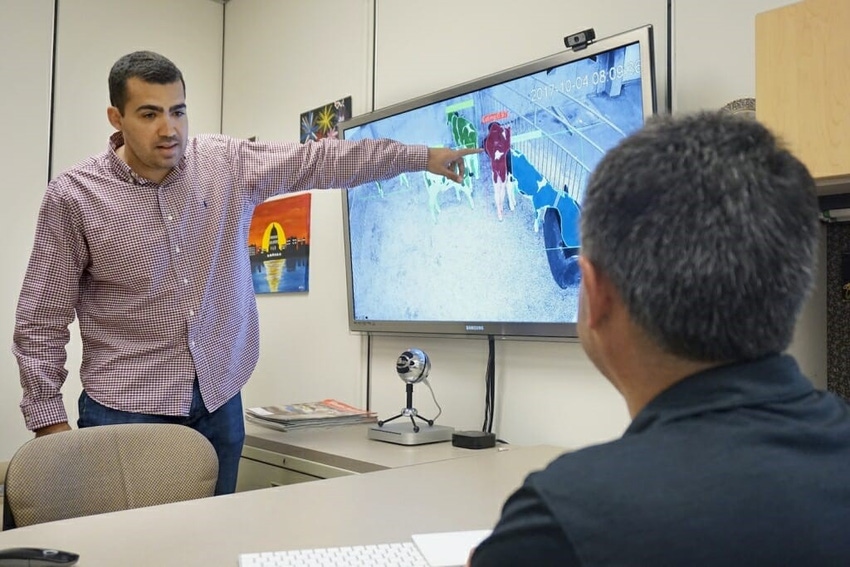Besides monitoring dairy calf growth and behavior, researchers are analyzing light spectrum to identify cows most efficient at converting feed into milk.
May 14, 2019

The same technology that alerts a self-driving car to a pedestrian in the crosswalk could also warn a dairy farmer that a calf is getting sick, even if that calf is mingled with dozens of healthy ones, according to an announcement from the University of Wisconsin-Madison.
Research by Joao Dorea, a new assistant professor in the University of Wisconsin-Madison dairy science department, is laying the groundwork for this and other technologies that gather and analyze data and pinpoint patterns that can help farmers make better decisions, the university said.
“We have a camera fully automated that recognizes what activity the calf is performing: standing, eating, drinking milk, drinking water, lying down,” Dorea said. “By the end of the day, we should be able to say, ‘Look, I have a calf here that’s lying around 30% more than normal.’
“Animals change behavior when they’re sick,” he explained. “There’s an increase in lying-down time, a reduced number of steps. We need to be able to pick up these little differences. It’s hard to spot in a large operation. By the time the farmer notices, it might be too late.”
In his new position, Dorea’s research and teaching will focus on dairy-related applications of precision agriculture and data analysis, the university said, adding that Dorea has been working on campus for three years, initially working with dairy nutritionists Lou Armentano and Dave Combs and later joining the lab of animal scientist Guilherme Rosa, who specializes in agricultural applications of data analytics and artificial intelligence.
In addition to monitoring calf behavior, Dorea and his research partners are using cameras to track calves’ growth, with the goal of seeing how growth patterns correlate with the calf’s future milk yield, milk composition and ability to successfully reproduce.
He also is part of another research team that’s working on a way to analyze the spectrum of light reflected by a cow’s milk to estimate how much feed she has consumed. Having such data on individual animals could help farmers identify which cows are most efficient at converting feed to milk, he said.
“With all the new technologies available, there’s a huge push for data scientists -- and dairy science is no exception,” said Victor Cabrera, a University of Wisconsin-Madison professor who develops data-driven decision-making tools for dairy farm managers. “Applying these technologies requires two kinds of expertise. You need to understand the sensory technology that collects data, such as imaging, analyzing milk or monitoring the cow’s activity, but this data doesn’t have value until you analyze it. We also wanted someone with expertise in that."
Dorea added, “I’m interested in the same biological questions that I had before. Now, with the amount of data that is being generated, I’m able to apply more analytics and quantitative analysis to better answer these questions.”
Source: University of Wisconsin-Madison, which is solely responsible for the information provided and is wholly owned by the source. Informa Business Media and all its subsidiaries are not responsible for any of the content contained in this information asset.
You May Also Like


.png?width=300&auto=webp&quality=80&disable=upscale)
